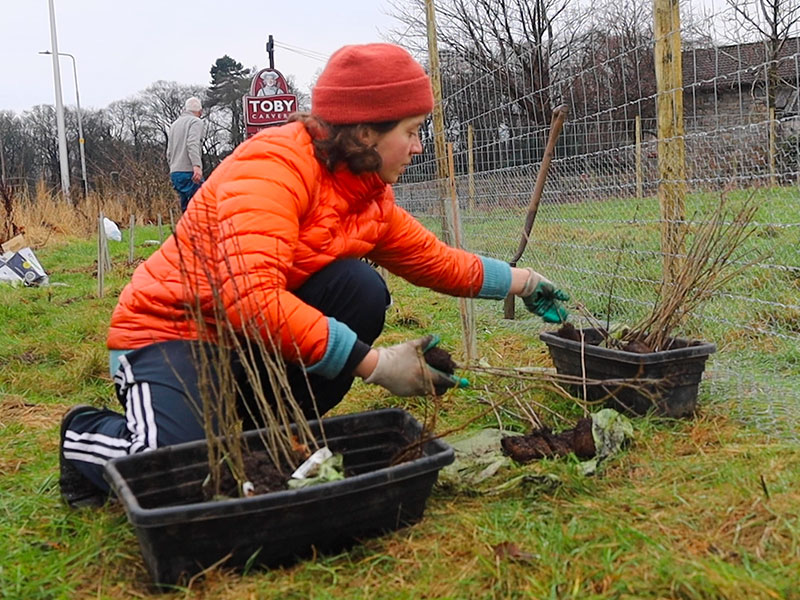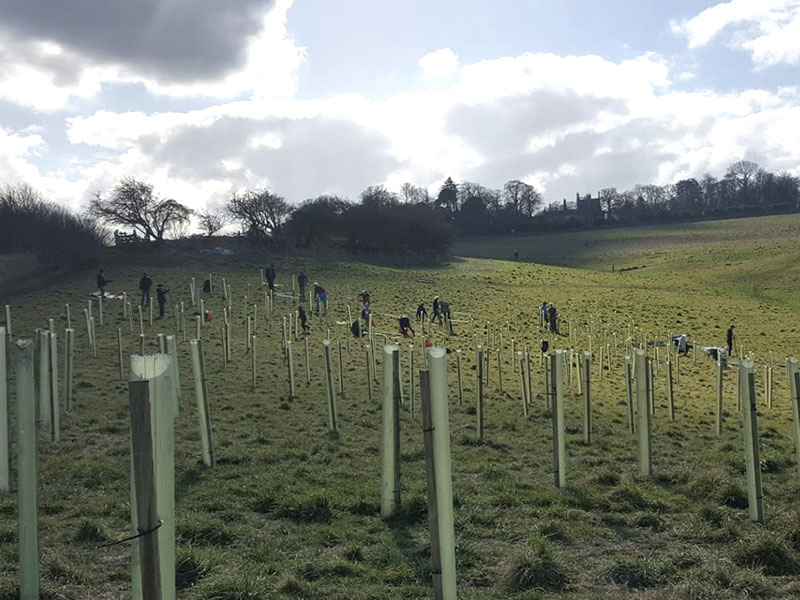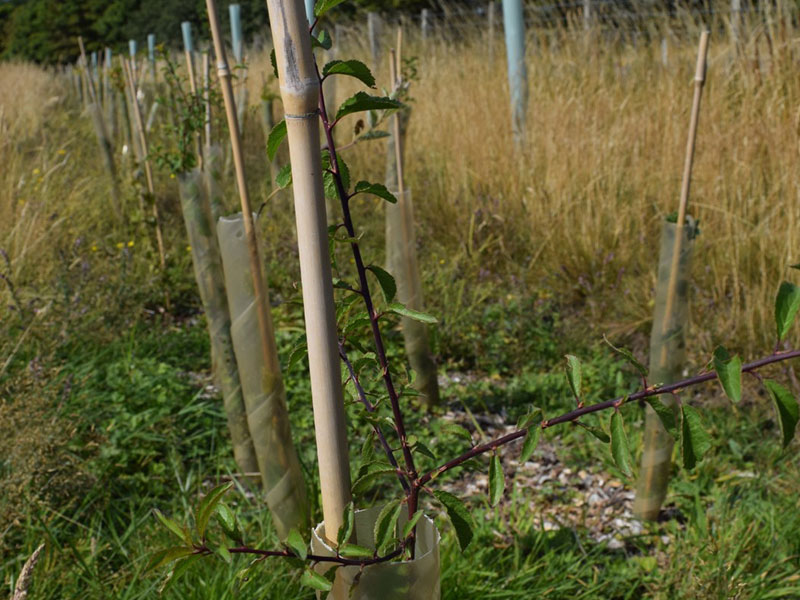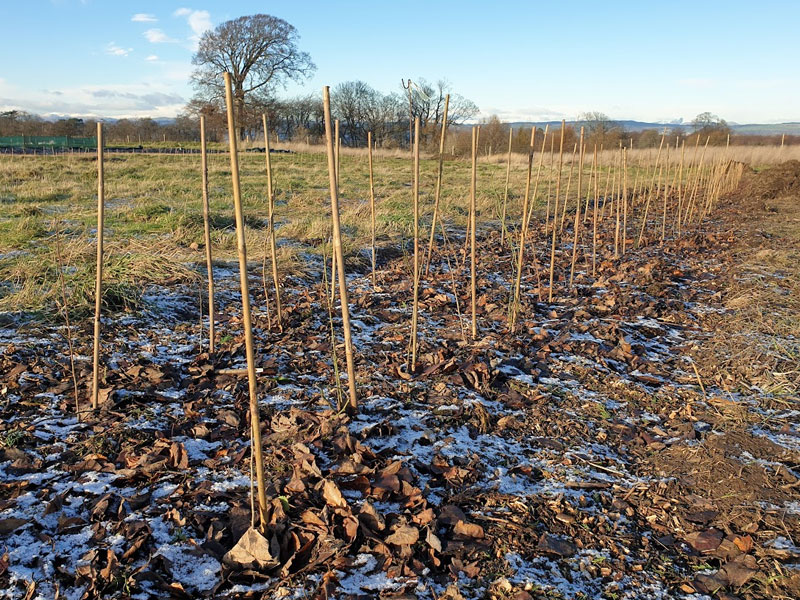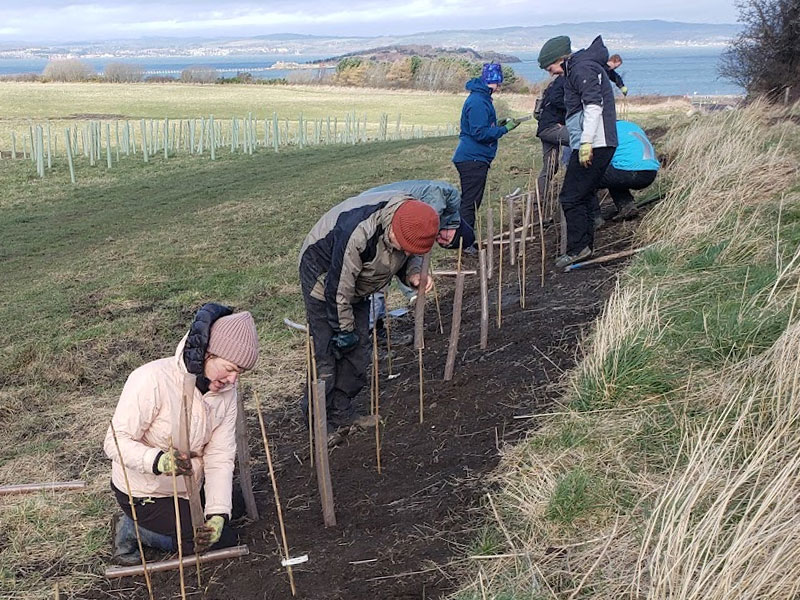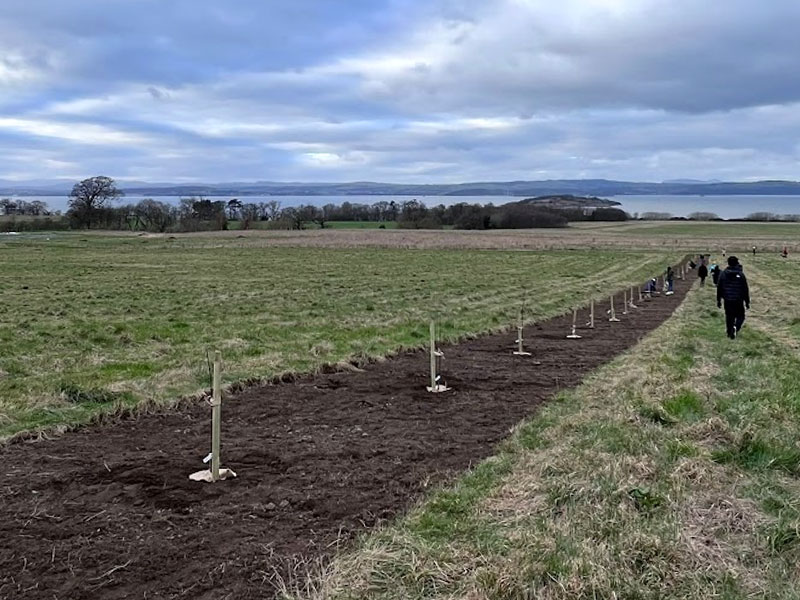Agroforestry

Planting trees across the farm was one of the first management interventions we undertook. Trees are integrated across the farm in a number of ways and in 2022 close to 10,600 trees were planted. Every year additional trees will be planted to create or expand existing woodland areas, increase diversity, enhance habitat connectivity and to provide more shelter or tree crops such as fruit, nuts or coppicewood.
The main areas of planting are:
Alleys – Alley cropping is an agroforestry growing system of planting field crops in alleys between lines of trees. This system provides shelter and microclimate niches,improves biodiversity and soil health, creates spatial diversity and produces perennial and annual crops from the field and trees. Tree strips at the farm will be planted with a mixture of fruit, nut and other crop producing trees. The first three alleys have been created in early 2023.
Mixed Native Woodland areas – approx 1.5 hectare of native mixed broadleaf woodland has been planted in 2022. As some of this area is wet and boggy we have included specific wet woodland species. We plan to continue planting in further years, creating additional smaller wooded areas, including a childrens’ woodland planted with local young people and expansion of the existing wooded area at the northwest corner of the farm. Species planted so far: Silver birch, Downy Birch, Alder, Hornbeam, Sessile Oak, Hazel, Rowan, Aspen, Willow, Lime, Bird Cherry, Wild Cherry, Field Maple, Hawthorn, Blackthorn, Elder and Walnut.
Coppice woodland – a specific coppice woodland is being created with Hazel, Sweet Chestnut and some Sessile Oak. We hope to be able to coppice here for farm purposes and to provide training in coppice skills and craft in future years.
Shelterbelts – these are being planted predominantly around growing areas to provide protection for crops.

